Planting & Care
Blank
Plant Requirements
Peonies require:
- half to a full day of sun,
- loose, well-drained soil,
- air circulation around the plant,
- and a cold winter dormancy period.
Bush peonies are suitable for USDA zones 2-8; tree peonies are suitable for USDA zones 4-8. They need a cold winter dormant period in order to bloom and thrive.
Roots should be planted in the Fall, allowing them to be established before they bloom in the Spring. We ship between September 15th and October 15th. All root shipments will include planting instructions.
Find detailed information about your planting zone with the USDA Plant Hardiness Zone Map.
Peonies Claim to Fame
A peony plant can live up to 100+ years, giving the plant its claim to fame. A mature plant will usually take up a three foot space and produce a large number of blooms. Care requirements are minimal. Although the initial investment is greater than for an annual flower, the life span of this perennial plant makes it a strategic purchase. After flowering and until the first Fall freeze, the deep green foliage can make a lovely backdrop for other colorful flowers or plants.
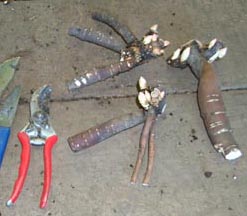
Root Divisions
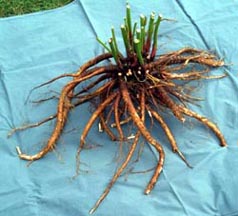
Mature Peony Root
Disease
The main disease affecting peonies is botrytis, or gray mold, which is a fungus and should be treated with copper sulfate or other fungicides (Such as fungicides for black spots on roses).
Be sure the plants are not too crowded to allow for air circulation around the plant.
Remove the foliage after Fall freezes to reduce the possibility of disease. For preventative measures, the stems and foliage should be placed in the garbage (not the compost) to prevent the spread of any botrytis spores (gray mold) that might be present. Composting materials with botrytis can help to multiply and spread these fungal spores. Botrytis is a natural fungus that is present in the soil. Its job is to break down dead plant material. In prolonged cool, rainy weather it can get mixed up and attack live plant material.
Botrytis generally just affects this years foilage and will usually go back for future years if the disease is kept under control.
Blank
Spring Care
It’s Time to Fertilize:
Once you see the peonies first starting to grow early spring, pushing through the soil it is time to fertilize. We recommend a tulip or daffodil bulb fertilizer to use on peonies. We also offer our own blend of Peony Fertilizer. The main thing to keep in mind if you are getting something off the shelf at your local hardware or garden center, is that the nitrogen content must be kept low, and one way to accomplish this is to use a slow-release nitrogen formula. Too much nitrogen causes lots of foliage growth but doesn’t encourage blooming.
Grass:
Keep grass from growing in a one foot radius of your plant, as grass can hinder a peony’s growth by fighting for resources. Also, make sure to not use RoundUp around Peony plants, as it will kill the plant.
Marking:
New Peony stems are fragile, you may want to mark them with a stake or flag marker so you don’t step on top of them or plant something right next to them when they are dormant.
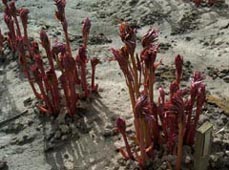
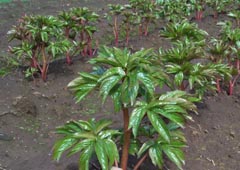
Disbudding (or removal of side buds):
is done for a couple of reasons:
1) to send more strength to the roots of 1st year plants,
2) to make the remaining flower larger,
3) to reduce the weight on the stem to help keep the flower upright when it rains.
How to Disbud:
It is best to take the side buds off when you first see the side buds forming. When the buds are smaller, they won’t leave much of any damage. If you do it when they are larger, you may leave a small scar on the stem where the side bud stem was. Push the side bud stem sideways between the main stem and the small leaf beside it so that it pops off at the base.
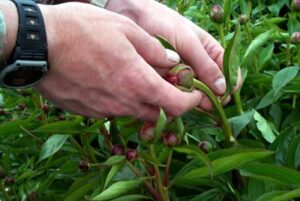
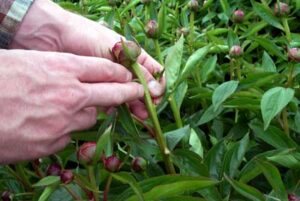
Summer Care
Deadhead: after they bloom, Deadhead by cutting the spent flower to the first leaf joint from the top of the flower. This will preserve the plant’s energy for next year’s bloom.
Watering: Peony plants need to be watered moderately in the summer, so that the soil is slightly damp to the touch.
Fall Care
Fertilize: Time to apply the Fall dose of fertilizer. We recommend a tulip or daffodil bulb fertilizer to use on peonies. We also offer our own blend of Peony Fertilizer. We find it is best to fertilize first then cut down the stems, so that you can see where the stems are and put the fertilizer around the stems.
Cut Back: Cut herbaceous and intersectional peony stems off to ground level between Halloween and Thanksgiving.
Tree peonies do not get cut back to the ground. You may pick the leaves off of the stems and leave the stems untouched.
For preventative measures, it is important to clean up the peony areas in the fall time and remove the foliage to prevent the foliage from breaking down on top of the plant, risking chance of disease next season. Some peonies don’t have this upkeep of care and will be okay, but especially important in wet climates like where we are located to prevent chance of disease.
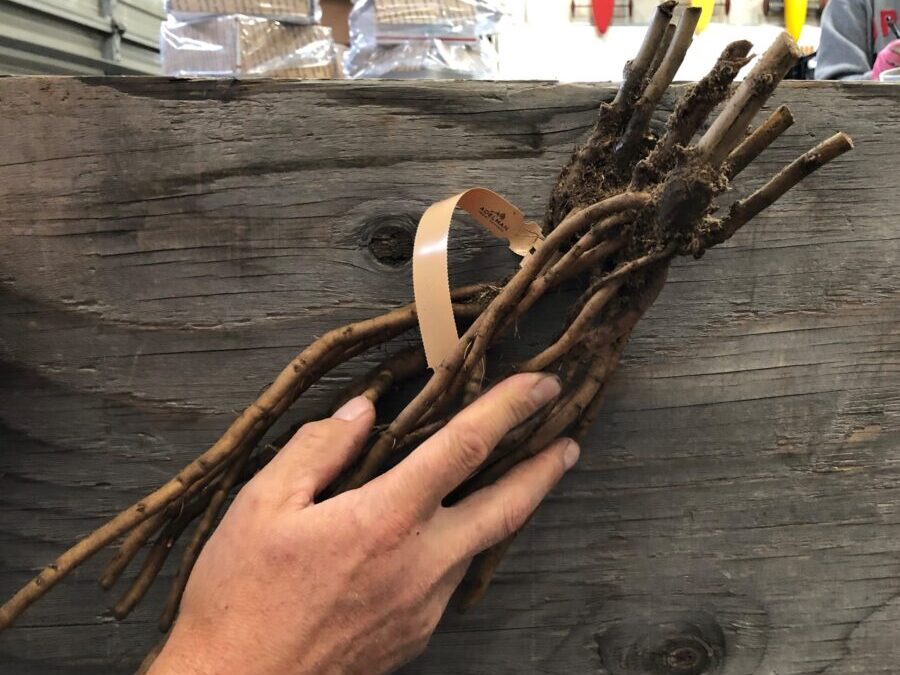
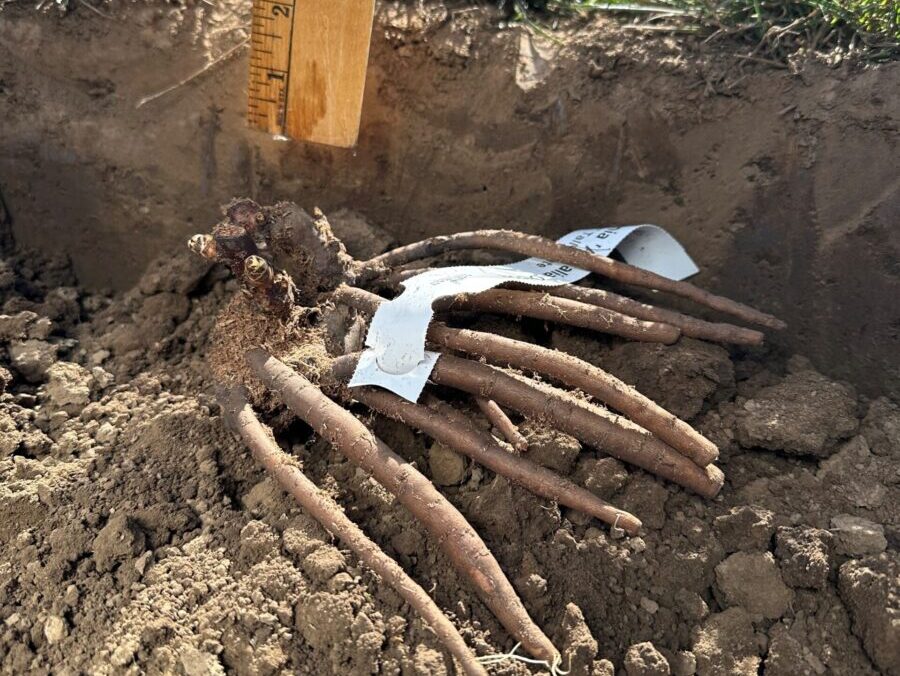
Woody/Tree Peony Bare Root
Herbaceous/Bush Peony Bare Root